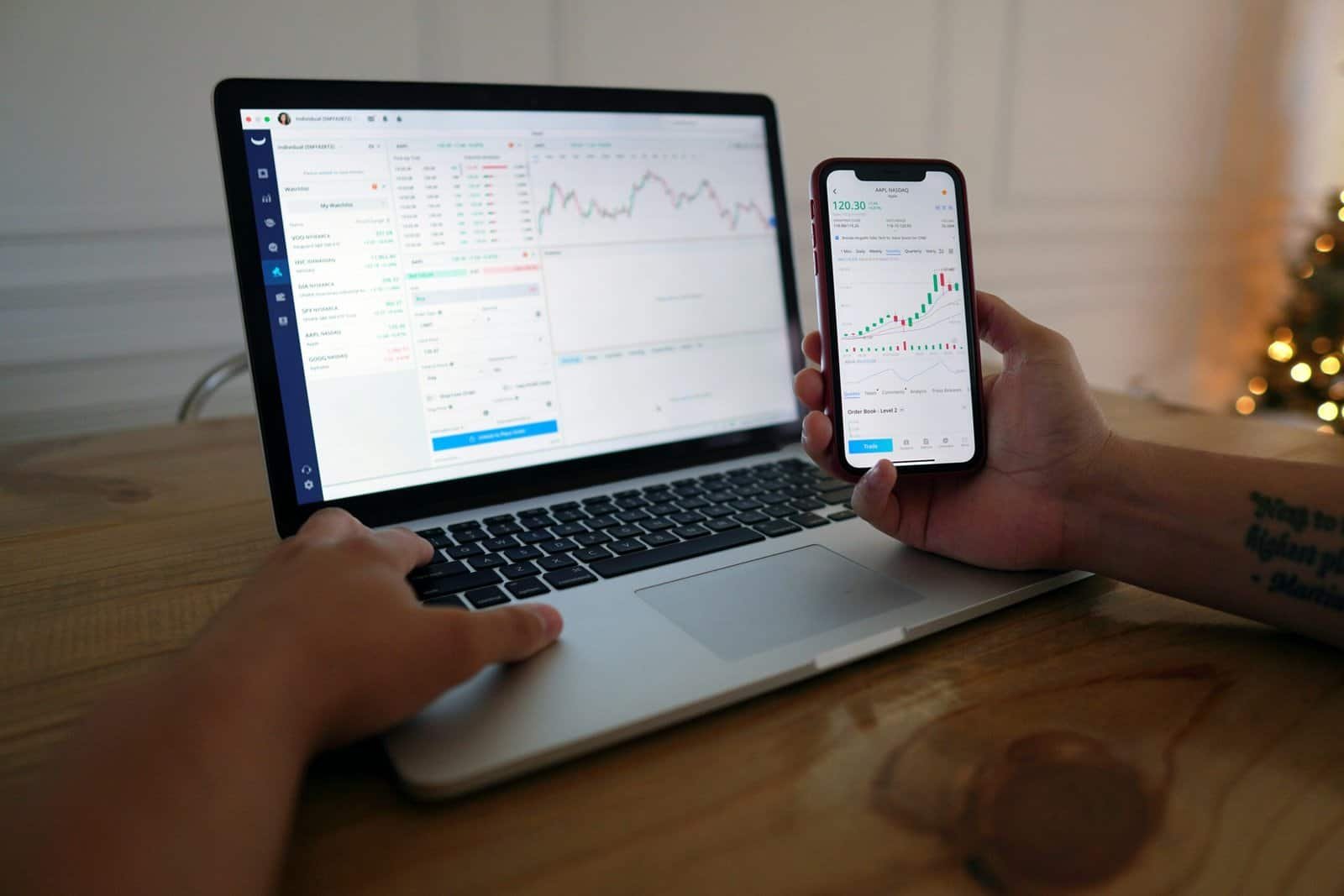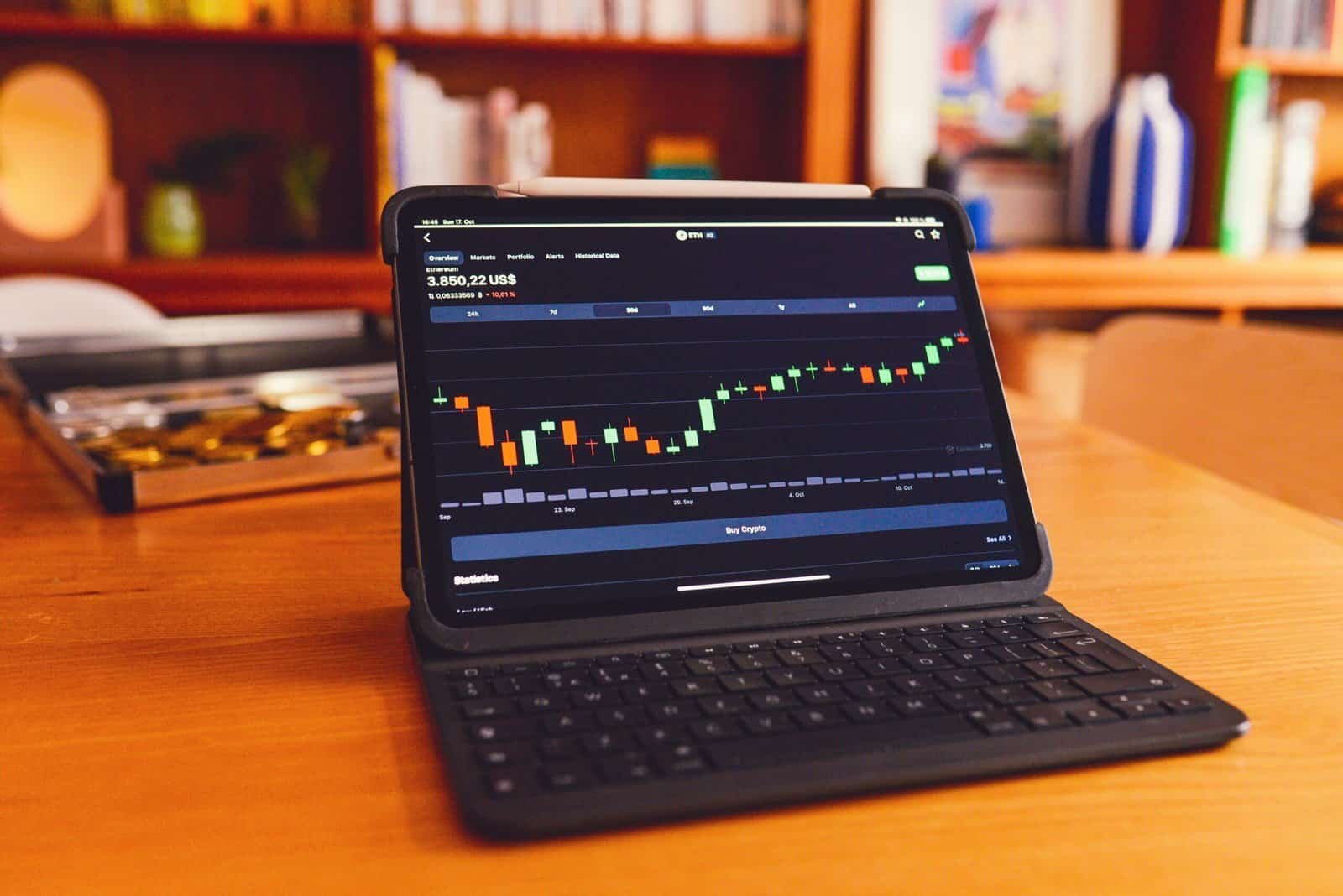? Want to know which exchanges let you copy trade in 2025 so you can follow experienced traders instead of making all the calls yourself?

Which Exchanges Offer Copy Trading In 2025?
You’ll find that copy trading has become mainstream across many crypto and multi-asset exchanges by 2025. This section gives a concise overview of the major platforms offering copy trading capabilities and how they differ from one another.
Most big platforms have added social and copy trading features to attract users who prefer passive exposure to experienced traders. Below you’ll find a short table for a quick comparison and then detailed breakdowns for each exchange and notable third-party services.
Quick comparison table — major exchanges and platforms
This table helps you see at a glance which platforms offer native copy trading, which rely on third-party integrations, what asset classes are supported, and typical minimums or special notes. Always check the platform directly for the latest limits and availability in your jurisdiction.
| Platform | Copy Trading Type | Assets Supported | Min. Investment (typical) | Notes |
|---|---|---|---|---|
| Bitget | Native copy trading / Leaderboards | Crypto futures & spot | $10–$100 (varies) | Strong focus on copy trading features and leader incentives |
| eToro | Native social & copy trading | Stocks, ETFs, crypto | $10–$200 (varies by asset) | Long-established social trading broker with regulated presence |
| Binance | Native copy trading + API-based via bots | Crypto spot & derivatives | Varies by strategy | Mix of native “copy” features and third-party bot integrations |
| Bybit | Native copy trading + copy bot marketplace | Crypto derivatives & spot | $10–$100 | Emphasis on derivatives leaderboards |
| OKX | Native social features & signal copy | Crypto spot & derivatives | Varies | Some markets restricted by jurisdiction |
| KuCoin | Native and third-party integrations | Crypto spot & margin | Varies | Offers user-run copy strategies and bots |
| Gate.io | Native copy-trading tools | Crypto spot & margin | Varies | Smaller but active social trading options |
| Huobi (regional) | Native copy features (where allowed) | Crypto spot | Varies | Availability depends on regional regulation |
| 3Commas (third-party) | API-based copy trading across exchanges | Crypto across many exchanges | $10+ | Connects to many exchanges via API |
| ZuluTrade / DupliTrade | Third-party mirror trading (brokers) | Forex, CFDs, crypto (via brokers) | Varies | Mostly broker-oriented, supports some crypto brokers |
| Shrimpy / Coinmatics | API-based social & portfolio copy | Crypto | $10+ | Focus on portfolio rebalancing and strategy copying |
What is copy trading and how does it work?
You’ll want to understand the mechanics before you commit capital. Copy trading means automatically copying the trades or portfolios of another trader or model portfolio.
When you follow a strategy or trader, the platform duplicates each trade proportionally in your account based on rules you set — either by fixed amount, percentage of your balance, or proportional to the trader’s size. Some systems copy trade entry and exit orders exactly; others mirror positions and rebalance periodically.
Types of copy trading you’ll encounter
Different platforms implement copy trading in distinct ways. Knowing the type helps you pick a platform that matches your goals and risk tolerance.
- Native copy trading: The exchange or broker builds the copy system into its product. You can follow leaders directly on the platform.
- API-based third-party services: Tools like 3Commas connect to your exchange account via API keys and mirror trades externally; this is versatile across multiple exchanges.
- PAMM/MAM: Pooled account structures (more common in forex) where a manager’s trades are allocated across investor accounts.
- Smart portfolios / basket products: Bundled strategies or thematic portfolios managed by the exchange or asset manager, rebalanced according to rules.
- Signal copying: Platforms or users publish trade signals; you can auto-execute signals using bots or manual copying.
Which crypto exchanges focus most on copy trading in 2025?
This section dives into the platforms that emphasize social trading and leaderboards and explains what you can expect when you use them.
Bitget
Bitget has been a prominent copy trading hub focused on crypto derivatives and spot markets. You’ll usually find leaderboards, follower statistics, strategies categorized by risk profile, and incentives for top performers.
Bitget’s system tends to include clear metrics — historical performance, maximum drawdown, copy fee models, and follower counts. That transparency helps you evaluate potential leaders and limits how much you have to guess about past performance.
eToro
Although eToro is a multi-asset broker rather than a pure crypto exchange, it remains one of the most recognizable copy trading platforms worldwide. You can copy traders across stocks, ETFs, and crypto.
You’ll find curated Smart Portfolios and the CopyTrader interface that shows a trader’s performance history, risk score, and open positions. eToro’s strong regulatory footprint in several jurisdictions gives you a layer of consumer protection many crypto-native platforms don’t offer.
Binance
Binance provides several avenues for copying trading activity. There are native social features, third-party bot marketplaces, and API access for external copy services. Binance’s huge liquidity and deep markets make copying technically efficient, but you must pay attention to fees on derivatives.
You’ll often use a mix of Binance’s native features for simpler copy setups and third-party tools for advanced automation. Be mindful of regional restrictions; in some countries Binance’s full product suite may not be available.
Bybit
Bybit offers a copy trading environment focused on derivatives alongside spot markets. You can browse trader leaderboards, see metrics, and pick copying parameters like proportion of trades or a fixed allocation.
Bybit sometimes rewards popular traders and active followers via promotions. Like many derivatives-focused platforms, it’s important you understand leverage implications, funding fees, and how stop-losses will behave when trades are mirrored.
OKX
OKX has added social and strategy-copying features to attract users who prefer managed exposure. Depending on your location, you may be able to copy strategies on spot and derivatives pairs.
You’ll usually find filters for sorting leaders by performance and risk so you can choose strategies aligned with your risk tolerance. As with other platforms, check jurisdictional restrictions and KYC requirements.
KuCoin
KuCoin has a mix of native social trading tools and integrations with third-party bot platforms. You can copy traders, use strategy templates, and connect APIs to external services.
KuCoin tends to be more modular — it leans on community-driven content and bots. This makes it flexible but also requires you to do more diligence on who you’re copying.
Gate.io and Huobi (regional)
These exchanges often provide social features and copy options where local regulation permits. You’ll find variations of leaderboards and strategy copy services tailored to their communities.
Availability and the depth of features vary across regions, so make sure the service you want exists in your country and that you meet any local requirements for trading derivatives or leveraged products.

Third-party copy trading services and aggregators
If you want cross-exchange functionality or more advanced automation, third-party services will likely interest you. They connect to your exchange account via API keys and execute trades on your behalf.
3Commas
3Commas is widely used to copy strategies and run bots across many exchanges. You’ll be able to mirror traders, use trailing stop logic, and backtest strategies before committing real funds.
3Commas gives you flexibility: you select the exchange, link with API keys, and then choose strategies or traders. Fees are subscription-based or tiered depending on features.
ZuluTrade and DupliTrade
These platforms are long-time players in the forex and CFD space and have expanded into crypto via broker partnerships. They offer signal boards, a rating system for strategy providers, and risk controls.
You’ll find a mix of retail and professional signal providers. Because they’re broker-focused, you may see more regulated structures for risk disclosure and performance reporting.
Shrimpy and Coinmatics
Shrimpy and Coinmatics emphasize portfolio-level copying and rebalancing. You follow a portfolio strategy and the tool rebalances your holdings to match the model periodically.
You’ll benefit from systematic rebalancing but should consider tax implications and slippage when rebalancing across exchanges or for high-turnover strategies.
Covesting (as integrated on some exchanges)
Covesting began as a social trading module and later integrated with exchanges like PrimeXBT; similar modules have been adopted by other exchanges. Covesting-style products provide leaderboards, performance metrics, and subscription or profit-sharing models.
You’ll typically select a manager and agree to a percentage-sharing arrangement or fixed fee to replicate their trades.
How to evaluate a copy trader or strategy
You shouldn’t just copy the top-performing trader without checking the numbers. Use these criteria to evaluate traders and protect your money.
- Risk-adjusted returns: Look beyond gross returns to metrics like Sharpe ratio and maximum drawdown.
- Consistency: Check monthly returns and stability over multiple market cycles.
- Trade frequency and style: High-frequency scalpers require different management than swing traders.
- Position sizing: Understand how the leader sizes positions relative to their equity. Your proportional copying should match your risk appetite.
- Transparency and track record: Prefer strategies with an extended, auditable trade history.
- Fees and profit-sharing: Know how much you pay to the strategy provider and how that affects net returns.
- Communication and strategy description: Clear rules reduce surprises when markets move.

Risk management and practical copying rules
Even with a solid strategy, you need active rules to manage risk. Copy trading doesn’t remove market risk, it only automates the replication.
- Start small: Allocate a portion of your portfolio to copy trading while you learn.
- Diversify across traders/strategies: Don’t put most of your capital behind a single leader.
- Use stop-loss or max-drawdown limits: Set explicit stop mechanisms on the copy allocation.
- Monitor position correlation: Many crypto traders will hold similar positions; diversify asset classes or strategies.
- Understand leverage: If leaders use leverage, your copy will replicate leverage if not adjusted — this can amplify losses.
- Keep liquidity in mind: Large trades in illiquid tokens can cause slippage and worse fills for followers.
- Rebalance and review regularly: Periodic checks help you remove underperforming strategies before losses compound.
Fees, pricing models, and hidden costs
Copy trading usually brings a combination of platform fees, trading fees, and sometimes profit-sharing.
- Trading fees: Every copy trade usually incurs exchange trading fees; derivatives trades may carry funding costs.
- Copy fees: Some platforms charge a subscription fee, a success fee (percentage of profits), or per-trade charges.
- Withdrawal and conversion costs: Moving funds off-exchange or between chains carries gas and conversion fees.
- Slippage: Execution lag and liquidity can cause different fill prices between leader and follower, especially in volatile moves.
- API-based service costs: Third-party services add subscriptions that affect net returns.
Always calculate the full cost to see if a strategy’s net returns justify copying.

Regulation, jurisdiction and safety considerations
Regulation can strongly affect which copy trading features are available to you. Exchanges and brokers operate under different rules in each jurisdiction.
- Know your exchange’s license status: Regulated brokers such as eToro often have stricter disclosures and consumer protections.
- Region-specific restrictions: Some platforms block derivatives or certain features for users in specific countries.
- Custody and ownership: Understand whether you own the underlying assets when copy trading or whether the provider holds them on custodial terms.
- KYC and AML: Copy trading still requires identity verification; be prepared for compliance requirements.
- Smart contract risk: If copy trading uses on-chain automation or DeFi components, there’s smart contract risk to consider.
Step-by-step: How you start copy trading on an exchange
This short guide walks you through the typical steps so you don’t miss crucial setup items.
- Choose a platform that supports the assets and features you want. Compare fees and regulation.
- Complete KYC/verification and secure your account with 2FA.
- Fund your account with the required minimum for the copy strategy.
- Review leaderboards and filter candidates by performance, risk, and style.
- Set copy parameters: allocation amount, max drawdown, stop-loss, leverage limits.
- Start with a small allocation or paper account if available.
- Monitor performance and make adjustments — don’t “set and forget” entirely.
- Withdraw and reallocate when a strategy no longer meets your criteria.

Case studies: How different users might use copy trading
These simple scenarios show common ways you might use the tools to meet different objectives.
- New crypto investor: You allocate 10–20% of portfolio to 2–3 low-risk leaders on a regulated platform to learn market behavior while keeping most capital in diversified, passive holdings.
- Active trader who lacks time: You follow a high-frequency leader with a small, fixed allocation and use stop-loss limits to cap downside.
- Risk-tolerant speculative user: You allocate a higher percentage to a few high-volatility leaders, accepting big drawdowns in pursuit of higher returns—but you keep a strict review cadence.
Common mistakes people make when copy trading
Avoid these pitfalls so your copy trading experience is more likely to be successful.
- Chasing past performance: Don’t assume the top performer from the last month will stay on top.
- Ignoring fees and slippage: They significantly reduce your net returns, especially with frequent trades.
- Copying without understanding strategy: Know what triggers trades and how leverage is used.
- Overconcentration: Putting too much capital into a single trader or highly correlated strategies.
- Failing to adapt: Markets change; your copying rules should evolve accordingly.
Jurisdiction-specific notes and what to watch for in 2025
Regulatory scrutiny of crypto and copy trading has been increasing. You should watch for:
- Restrictions on crypto derivatives in certain countries that limit copy trading for leveraged products.
- Requirements for platforms to disclose performance and risk metrics to followers.
- New rules for social trading platforms regarding advertising and past performance claims.
- Tax transparency rules that may change how gains from copied trades are reported.
These developments can affect which platforms are available and how features work in your country.
FAQs about copy trading on exchanges in 2025
You’ll likely have specific practical questions before you start. Here are some common ones.
- Can I lose more than I invest when copying a trader? Yes, especially if leverage is involved. Always check if your copy settings cap exposure.
- Is it taxable? Yes — profits from copy trading are usually taxable as trading gains; check your local tax laws.
- Can I copy more than one trader? Yes — diversifying across traders is a common risk-management tactic.
- What if a trader changes strategy? Good platforms show open positions and recent trades so you can spot changes; set alerts to review when a leader deviates from their historical style.
- Are copied trades instantaneous? Execution depends on liquidity and platform architecture; expect minor delays and potential slippage.
Checklist before you copy a trader or strategy
Use this quick checklist to make sure you’ve covered the essentials.
- Confirm platform regulation and availability in your country.
- Review fee structure and how profit-sharing is calculated.
- Check the leader’s drawdown, trade frequency, and historical performance.
- Set allocation, stop-loss, and leverage limits in your copy settings.
- Start with a small allocation or test account if available.
- Monitor your positions and set alerts.
Future trends to watch in copy trading
If you plan to be an active copy trader in 2025 and beyond, these trends may shape your choices.
- More regulated social trading products that blend crypto with traditional finance safeguards.
- Greater interoperability between exchanges through API-based services for cross-platform copying.
- AI-enhanced leader selection and risk profiling tools to help you choose strategies more objectively.
- Tokenized strategy pools where you can buy or sell a token representing exposure to a strategy.
- On-chain social trading primitives where copy logic runs in smart contracts — bringing both automation and new smart contract risks.
Final recommendations and how to proceed safely
You’ll get the best results if you approach copy trading like a systematic part of your portfolio rather than a get-rich-quick shortcut.
- Start small and diversify across strategies and platforms.
- Use regulated platforms when possible if you value consumer protections.
- Focus on risk-adjusted metrics, not only absolute returns.
- Stay informed about fees, tax treatment, and regulatory changes.
- Keep some capital in reserve and maintain a clear exit strategy for each copied position.
Copy trading can be a powerful way to leverage other traders’ expertise, but it requires the same due diligence you’d apply to any other investment. By understanding the platforms, the mechanics, and the risks, you’ll be in a much stronger position to use copy trading effectively in 2025.
If you want, I can create a tailored shortlist of platforms that match your country, risk tolerance, and the asset classes you want to trade. Which assets and region should I focus on?
